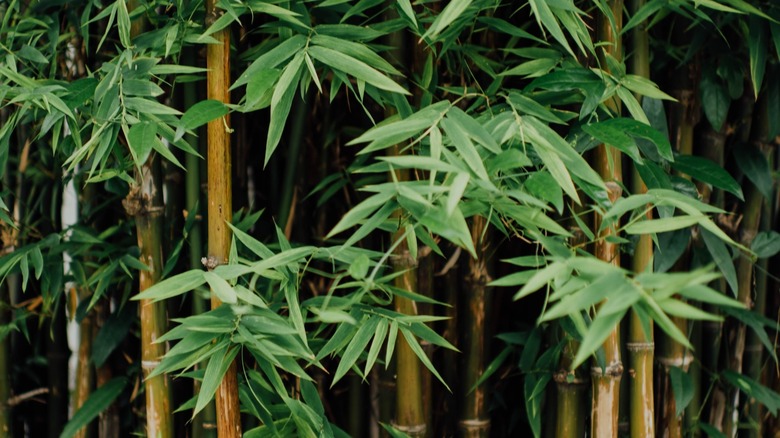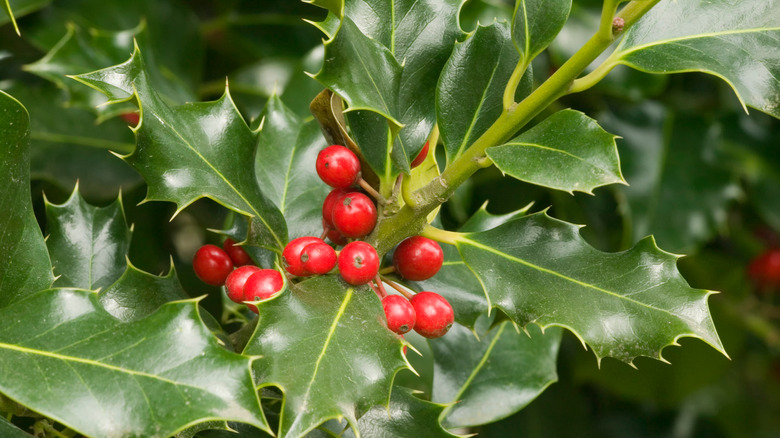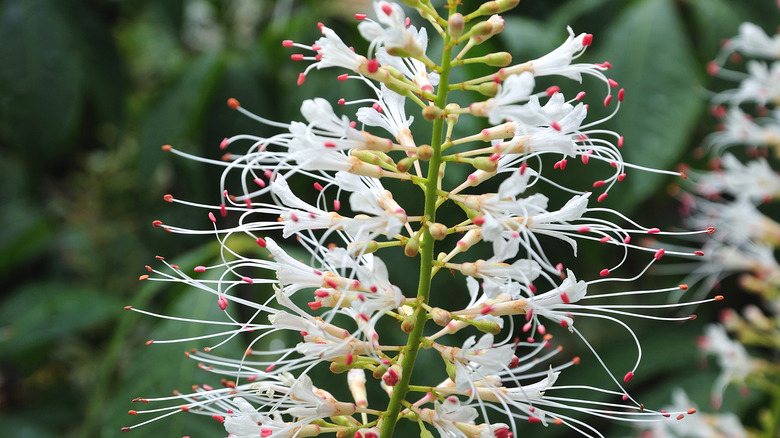Better Alternatives For Invasive Golden Bamboo
Golden bamboo originates from China, and its aggressive spread in various regions has labeled it as invasive. Its expansive growth is attributed to its underground rhizomes. A rhizome called a creeping rootstalk, is a horizontal underground plant stem that can generate a fresh plant's root and shoot structures. This makes containing golden bamboo challenging — and eradicating it difficult. Several additional factors contribute to its invasive nature. First, its dynamic growth capacity enables golden bamboo to swiftly overtake uncultivated terrains, extending its boundaries into adjoining properties. Also, remarkably sturdy, it often resists various control measures, posing difficulties in complete extermination. As well as this, its unchecked proliferation results in the degradation of natural habitats and pushes out indigenous flora.
For those looking for sustainable alternatives, several native and non-invasive options exist. Yaupon is native to the southeastern United States. This evergreen can be identified as a small tree or large shrub. It bears red berries, serving as bird food. Bottlebrush Buckeye is another southeastern U.S. native. This flora acts as a shrub or a small tree, boasting white flowers in summer and captivating fall foliage. Giant Cane Bamboo is contrary to golden bamboo. This native species is non-invasive. It's a clumping bamboo, implying it doesn't propagate aggressively via underground systems. Wax Myrtle is an evergreen from the southeastern U.S. It's distinguished by its blue-gray berries, another bird delicacy. While golden bamboo's intrusive nature is problematic, alternatives like Yaupon, Bottlebrush Buckeye, Giant Cane Bamboo, and Wax Myrtle offer ecologically sound replacements.
How to plant golden bamboo alternatives
When considering eco-friendly alternatives to golden bamboo, it's essential to understand each plant's distinct needs to ensure their thriving growth. For Yaupon, choose a location with abundant sunlight, leaning towards full sun to partial shade. It thrives in well-draining soil and necessitates regular watering until firmly established. Late winter or early spring is the ideal time to prune Yaupon to preserve its desired shape. On the other hand, Bottlebrush Buckeye is more shade-loving, preferring areas with partial to full shade. Much like the Yaupon, it thrives in well-draining soil, needs regular watering until rooted, and benefits from pruning at the end of winter or the outset of spring.
Giant Cane Bamboo is versatile in its sunlight needs, from full sun to partial shade. Checking that it's planted in well-draining soil, with consistent watering until it's rooted, will promise healthy growth. Pruning in late winter or early spring helps maintain its appearance. Lastly, Wax Myrtle mirrors many of the same requirements as the Yaupon. Its optimal spots range from full sun to semi-shaded areas, and it also requires well-draining soil and regular watering. Trimming during the late winter or the dawn of spring will keep it looking its best. It's wise to delve deeper into their unique care needs to ensure these plants flourish. Moreover, adequate space between them is pivotal to negating overcrowding and reducing the potential spread of diseases.
Tips for successfully caring for golden bamboo alternatives
Maintaining the health and appearance of plants such as Yaupon, Bottlebrush Buckeye, Giant Cane Bamboo, and Wax Myrtle requires regular care and vigilance. For Yaupon, it's essential to water it consistently, ensuring not to saturate the roots, which could lead to root rot. Late winter or early spring pruning keeps its form, and a balanced fertilizer applied in spring nurtures its growth. Regular monitoring for pests and diseases ensures timely intervention. Bottlebrush Buckeye shares similar care needs. Come spring, a slow-release fertilizer works best. Like the Yaupon, watch out for potential pest infestations or diseases.
Giant Cane Bamboo must be planted in a contained space to prevent its aggressive spread. As with the other plants, looking for any signs of pests or diseases is crucial. For the Wax Myrtle, adopt a consistent watering routine, avoiding root saturation. Applying a low amount of shrub fertilizer will ensure its vitality. Monitoring for pests and diseases remains a top priority. Understanding their needs concerning sunlight, water, and nutrients is vital for all these plants. Furthermore, proper spacing between each plant mitigates overcrowding and curtails potential disease spread, ensuring a healthy and lush garden landscape.


